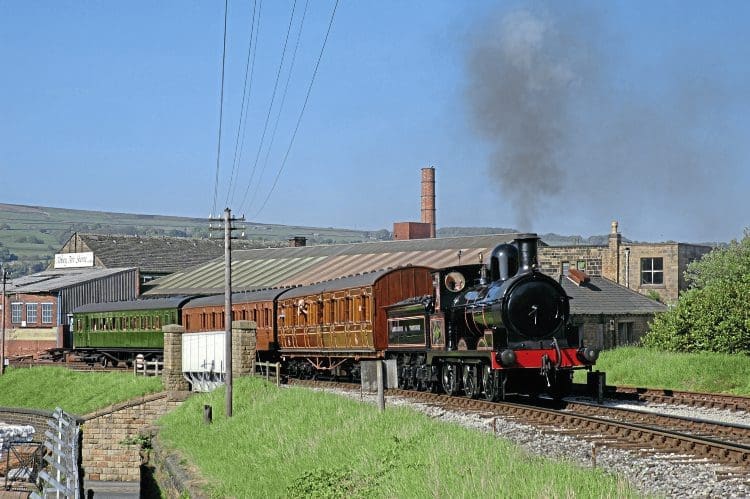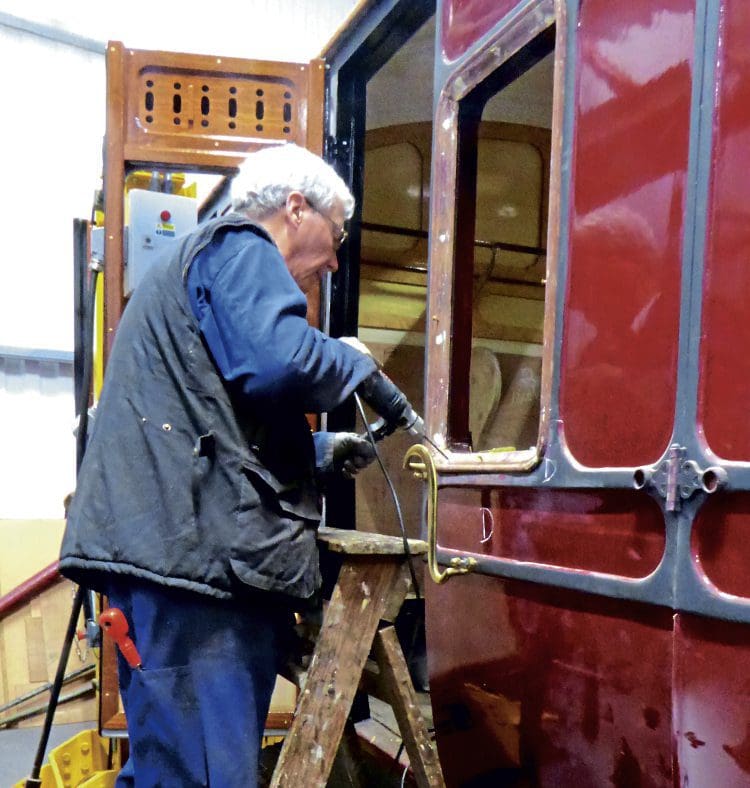The collection and the achievements of the Vintage Carriages Trust are explored by Rodney Towers on a visit to Ingrow as host the Keighley & Worth Valley Railway celebrates its 50th anniversary in style.
Today it is the Vintage Carriages Trust that owns and operates a rather special museum at Ingrow in the Worth Valley near Keighley. Its collection currently comprises 13 items of rolling stock; nine carriages, three small industrial steam locomotives and one railbus.
As a museum, it claims to have one outstanding and possibly unique feature in that all the vehicles have wheels and can roll on standard gauge track. There are no static exhibits in the collection.

Two locomotives and one carriage are off site on long-term loan arrangements with other heritage railways and, as VCT chairman Trevor England says, “in this way they can be seen by a greater number of people, it helps to keep the vehicles maintained and at the same time it promotes the name and purposes of the VCT”.
Enjoy more Heritage Railway reading in the four-weekly magazine.
Click here to subscribe & save.
Origins
The founding spirits of the trust based in Yorkshire came, perversely enough, from Lancashire. Back in the early 1960s, Tony Cox purchased the only remaining survivor, No. 957, of a batch of 50 steam locomotives built in 1887 by Manchester engineers Beyer Peacock for the Lancashire & Yorkshire Railway. At about the same time he also acquired a carriage of wooden construction built in 1876 for the Manchester, Sheffield & Lincolnshire Railway.

By the middle of 1962, BR had given notice of its intention to close the Worth Valley branch. This stimulated a group of enthusiasts to form the Keighley & Worth Valley Railway Preservation Society that year. Tony Cox was elected its secretary, and the society lost no time in commencing negotiations with BR to purchase the line. Then began five years of exhaustive legal wrangling, at the end of which it became the first successful party to complete a purchase of a former BR line.
With the end of steam in sight and the Beeching ‘axe’ slashing the national network, it became obvious to preservationists that a lot of history was destined for the scrapyards. In particular, there were some people who perceptively identified that this would be a last opportunity to save some of the surviving carriages of wooden construction from that fate, and that a place was needed where such vehicles could be both stored and restored.

Then, in 1965, Robin Higgins became another of those purposeful people who
took the initiative to save two ageing six-wheeled carriages from BR. These were an 1886-built Midland Railway Composite and an 1888-built GNR Brake Third. Robin, already a member of the Lancashire & Yorkshire Railway Trust, took both vehicles to Haworth, where the L&Y Trust had earlier established an operational base. Such a choice was perhaps not surprising because Haworth was also the place where the Worth Valley Carriage & Wagon and Locomotive departments were located.
With these preservation initiatives going on, meetings between like-minded enthusiasts were frequent. Haworth was a natural forum for the exchange of opinions, plans and new ideas. It was one of these ideas which, in 1965, led to the formation of the Vintage Carriages Trust. The first chairman would be Tony Cox and the trust would begin life at Haworth. The initial objective was to specialise in the restoration of wooden and composite carriages so that they could run again on the railway to which they had ready access. A few years later, in about 1970, they then relocated to Oxenhope, the line’s southern terminus.
Read more and view more images in Issue 242 of HR – on sale now!
Advert
 Enjoy more Heritage Railway reading in the four-weekly magazine. Click here to subscribe.
Enjoy more Heritage Railway reading in the four-weekly magazine. Click here to subscribe.




